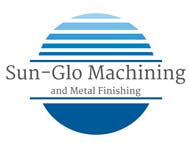When dealing with metals within any industry, the biggest threat is rust and its corrosive effects. Corrosion can cause disruptions in production and manufacturing, transportation, utilities, and infrastructure within any industry, so what can do you do to combat it? Zinc electroplating allows you to coat metals with a physical zinc layer in order to prevent rust from reaching the metal surface underneath. The zinc electroplating process is complex. The following describes the steps taken in a typical zinc electroplating process.
Step 1 – Cleaning the Substrate
The first step is to clean the substrate (the metal you wish to plate); any contamination on the surface of the metal will prevent the zinc electroplating coating from properly adhering to the substrate. Typically, an alkaline detergent is used to clean the surface, soaking the metal in an alkaline bath for 5 – 10 minutes, and 150 F is generally enough to rid most of the surface of soil and dirt. After the initial bath, further cleaning is completed via an electrocleaner. At the cathode or anode end of the metal, an electric charge is applied, producing the release of oxygen or hydrogen from the solution that cleans the substrate surface at a microscopic level.
Step 2 – Activation of the Substrate
To finish the preparation of the substrate, it goes through a process called activation, or pickling, which consists of submerging the metal into various acid solutions in order to remove oxides and scales which were formed on the metal during manufacturing, storage, and handling. Activation often uses acids, such as sulfuric acid or hydrochloric acid, and the type of metal and thickness of scale present will determine the dipping time, the acid type, and temperature required for the zinc electroplating process.
Step 3 – Preparation of the Plating Solution
The zinc electroplating process requires a specialized electrolyte solution for the substrate to be immersed into. This plating bath consists of a zinc metal ionic solution as well as various chemicals to assist in the plating process. The proper solution will help produce the required chemical and physical properties of the finishing plating and are often categorized into two types of baths. Acid Zinc baths are an efficient method of plating; they are fast and superior in covering, but they also provide poor throwing power and thickness distribution. Alkazine Zinc baths are less efficient and slower, but they produce a better thickness distribution and ductility.
Step 4 – Zinc Electroplating
Once ready for plating, the metal can be introduced to two methods of plating: either rack plating or barrel plating. Rack plating is designed for larger parts, and they are affixed to metal racks which are then submerged into a tank containing the plating bath. Barrel plating is designed for smaller parts, and instead of a tank, the parts are put into a barrel and rotated to provide a uniform finish. While in the bath, an electrical DC current is applied to a node for a set duration of time, which results in the zinc ions depositing onto the cathode (the substrate.) The flow of electricity has to be uniform, or else you’ll end up with an uneven zinc electroplating coating.
Step 5 – Rinsing and Drying
After the Zinc electroplating is completed, the now zinc coating substrate must be rinsed by water and then dried. If there is extra contamination, then it may be rinsed multiple times to ensure a clean surface. If additional protection is required, passivates and sealers can be applied after the rinsing.
If you are looking for a company with expertise in the Zinc Electroplating Process, contact Sun-Glo Industrial Plating.
Sun-Glo Machining and Metal Finishing
quotes@sun-glo.com
800-741-1456
